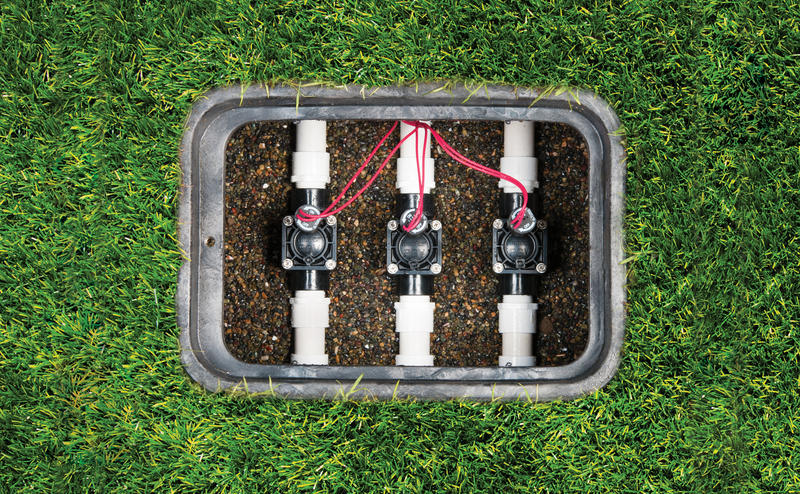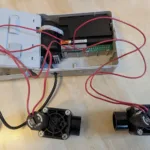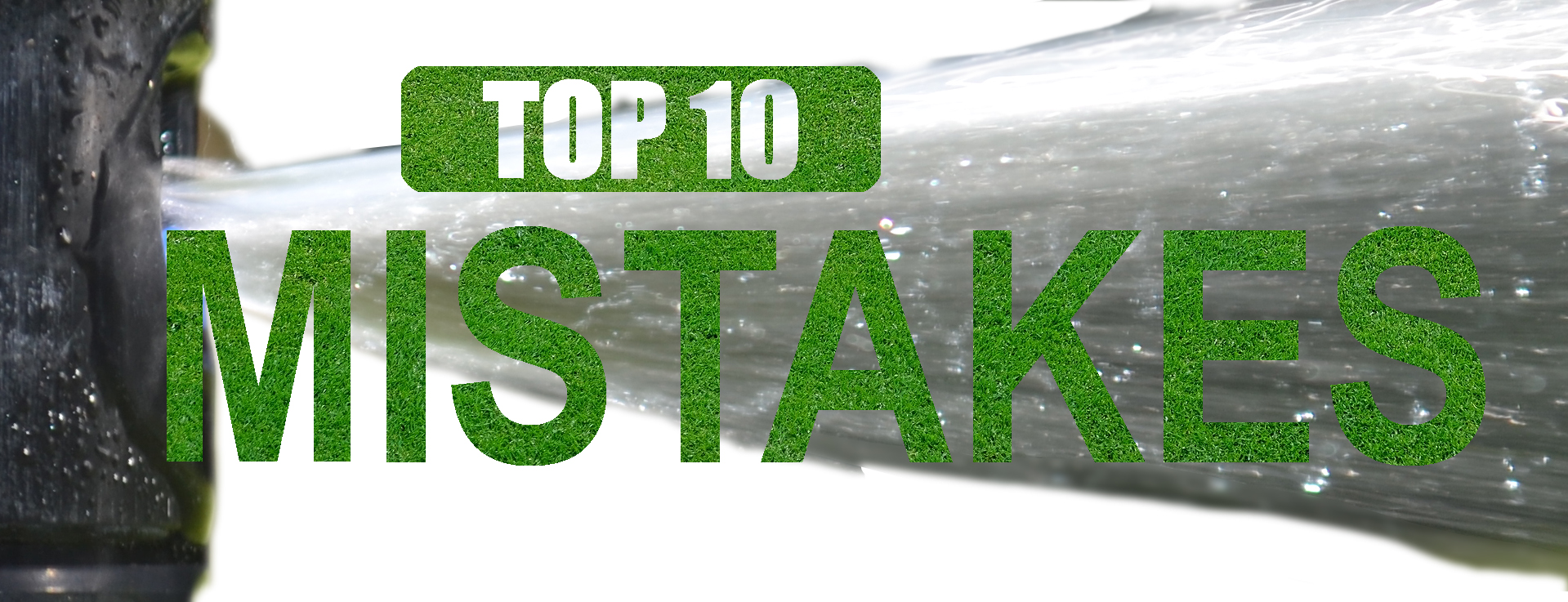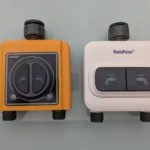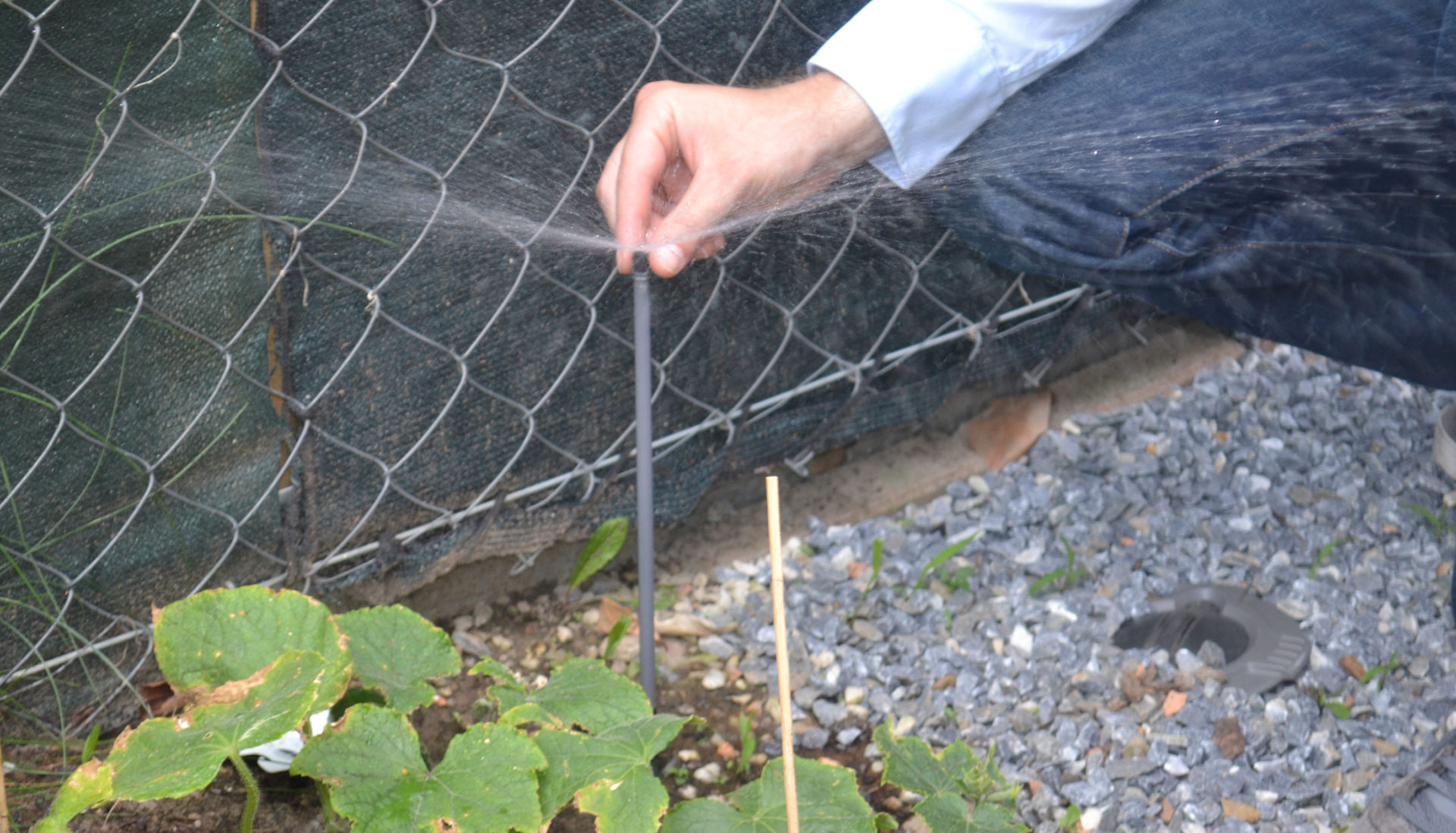In this blog post you will find an overview of the solenoid valves available on the irrigation market and their performance data. You will also find out which functionalities are important for you as a private user and which advantages they bring.
Further background information on control with solenoid valves can be found in the “Control” section.
The first very important point that distinguishes the solenoid valves available on the market is the energy supply:
Electric or battery operated
A very important point when buying the solenoid valves is whether or not there is a power connection available to control the valves. In the first case, the irrigation computer is connected to the power supply and from there 24 volt AC lines are routed to the valves. In the second case, a battery-powered watering computer is used. The valves are connected to this via 9 volt DC lines.
This requires different solenoid valves! The solenoid valves offered on the market are usually 24 volt AC valves. If you want to use this in combination with a battery-powered irrigation computer, you have to replace the 24 volt AC solenoid attached to the valve with a suitable 9 volt DC latching solenoid. Such replacement solenoids are offered by all major solenoid valve manufacturers, I present them at the end of the article. The use of 9 volt DC latching solenoid valves is therefore somewhat more expensive, since you have to buy the appropriate 9 volt replacement solenoid in addition to the actual solenoid valve.
The valves usually work in the same way across brands, so there shouldn’t usually be a problem mixing valves from different brands or swapping one brand valve for another brand valve, as long as you stay in the 9V DC or 24V AC range. Only the 9 volt replacement solenoids do not always fit across providers!
With flow regulation or not
By default, the flow on the valve cannot be adjusted. But almost all brands also offer models where this is possible. This can be useful to adjust the amount of water flowing through specifically for this one sector, e.g. to reduce the range of the sprinkler for the entire sector.
Tip: Even if you can’t think of a necessary application at the moment, it’s best to buy the valves with flow control anyway! They hardly cost more and just in case it doesn’t hurt to have this additional option.
Below is a selection of Flow Control Solenoid Valves with performance data:
24 volt solenoid valves with flow control
| Hunter PGV-101 | Hunter PGV-101-JT (Jar Top) | Rain Bird 100-DVF | |
|---|---|---|---|
Auto Amazon Links: No products found. |
Auto Amazon Links: No products found. |
Auto Amazon Links: No products found. |
|
| Voltage | 24 Volt | 24 Volt | 24 Volt |
| Flow control? | Yes | Yes | Yes |
| Minimum flow | 13 gallons/hour | 13 gallons/hour | 60 gallons/hour |
| Maximum flow | 2.400 gallons/hour | 2.400 gallons/hour | 2.400 gallons/hour |
| Pressure range | 22 to 145 psi | 22 to 145 psi | 15 to 150 psi |
| Connection | 1 inch | 1 inch | 1 inch |
| Costs | Approx. 20 USD | Approx. 27 USD | Approx. 23 USD |
Jar Top – One touch maintenance or not?
You may have noticed that some of the solenoid valves listed above have the suffix “Jar Top” added to them. This describes the property of the valve being able to be opened for maintenance with a turn of the hand. Like opening a pickle jar a quarter turn.
Tip: This is particularly important in the professional field, where every second of delay causes personnel costs and thus costs money. In the private sector, where you rarely deal with the valves, this is not really necessary. The Jar Top valves cost about the same, so whether you want to use this version is a matter of taste.
Low flow capable or not?
To function correctly, the valves require a certain minimum amount of water to flow through them. This quantity is included in the table as the minimum flow rate. Valves that require a very small amount of water, such as only 13 gallons per hour, are referred to as “low flow capable”. These can then also be used without any problems for small micro-irrigation sectors with very little water consumption. The valves listed here all have very low minimum flow rates.
Pressure range and maximum flow?
In any case, the use of the solenoid valves must remain within the maximum water pressure and water flow limits specified by the manufacturer. Although that will not be an issue with a normal private system. Even the smallest of the valves featured here have a rating of 1,800 gallons/hour and 145 psi of water pressure. These are far higher values than occur with conventional irrigation.
In-line valve, angle valve, in-line and angle valve?
This is about the design of the valves. With the in-line valve, the inlet is on the right and the outlet is on the left. With the angle valve, the inlet is at the bottom and the outlet is on the right. This has advantages in terms of pressure loss, which is why this type of valve is often used in the professional sector. If you work with not so high pressure, the difference is rather small and therefore usually negligible for private users. The argument that counts here is that the valves can be easily installed in the valve box. The third type is the in-line and angle valve. This offers both options, it can be used as an in-line valve or as an angle valve. It has an inlet on the left and below and an outlet on the right. If you connect something to the inlet at the bottom, the inlet on the left closes and vice versa.
Different threads
The last point to watch out for is the different threads: Firstly, the valves are offered with different connection thread sizes and secondly as either male or female threads. The same solenoid valve model is often available with a wide variety of thread designs.
Tip: It is best to think about how you want to mount the valve before you buy it. In most cases the standard version will fit. If not, then you can make your life easier and grab the right thread design right away to save yourself the use of unnecessary spacers during assembly.
Below is an overview of solenoid valve models without flow regulation:
24 volt solenoid valves without flow control
| Hunter PGV-100 | Rain Bird 100-HV | Rain Bird 100-DV | |
|---|---|---|---|
Auto Amazon Links: No products found. |
Auto Amazon Links: No products found. |
Auto Amazon Links: No products found. |
|
| Voltage | 24 Volt | 24 Volt | 24 Volt |
| Flow control? | No | No | No |
| Minimum flow | 13 gallons/hour | 13 gallons/hour | 60 gallons/hour |
| Maximum flow | 2.400 gallons/hour | 1.800 gallons/hour | 2.400 gallons/hour |
| Pressure range | 22 to 145 psi | 22 to 145 psi | 15 to 150 psi |
| Connection | 1 inch | 1 inch | 1 inch |
| Costs | Approx. 25 USD | Approx. 20 USD | Approx. 25 USD |
Convert 24 volt solenoid valve to 9 volt solenoid valve
To convert a 24 volt solenoid valve into a 9 volt solenoid valve that can be used with a battery powered water timer, there are offered 9 volt replacement solenoids on the market that can be used to replace the 24 volt solenoids attached to the solenoid valve. The sales offers show which solenoid valves the replacement solenoid is compatible with.
9 volt replacement solenoids
| Rain Bird Replacement solenoid | Orbit Replacement solenoid | Rain Bird Replacement solenoid | |
|---|---|---|---|
Auto Amazon Links: No products found. |
Auto Amazon Links: No products found. |
Auto Amazon Links: No products found. |
|
| Voltage | 9 Volt | 9 Volt | 9 Volt |
| Costs | Approx. 24 USD | Approx. 11 USD | Approx. 11 USD |

